It’s a well-known fact that tumble dryers can be very costly to run. When you’re using one multiple times a week, the pennies can soon add up.
To help cut down on these costs, many people are trying to find alternative solutions to drying their clothing.
The clear alternative to a tumble dryer in the summer months is drying your clothes outside on the washing line.
Unfortunately, this option isn’t available during winter, as it is often rainy and miserable outside. But luckily, we have six different tumble dryer alternatives for drying your clothes indoors.
We also have several quick-drying options that can’t be used for an entire load of washing but can be used to speed up the drying process if you need a specific garment as soon as possible. Read on for all you need to know.
Whether you’re looking to reduce your household bills, your tumble dryer is playing up, or you don’t have a tumble dryer at all, we have plenty of alternatives for you to try out:
1. Non-Heated Clothes Airer
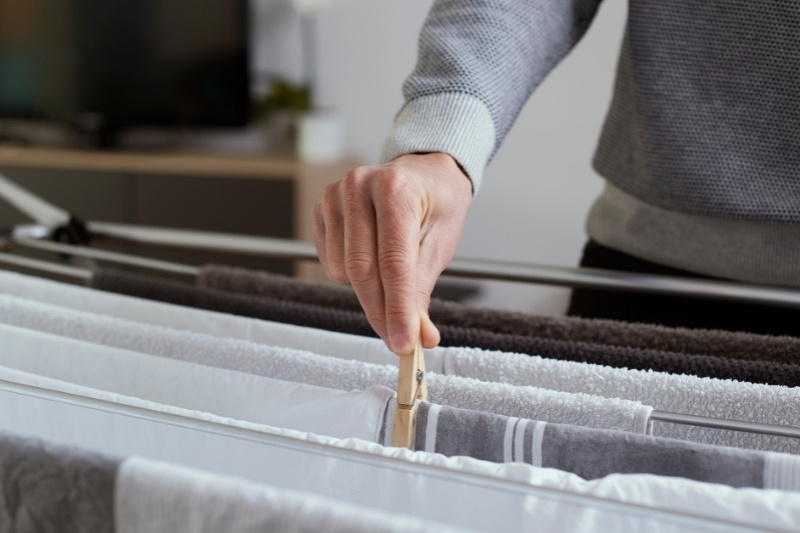
Also known as a clothes horse, drying rack or clothes maiden, a clothes airer is one of the cheapest options for drying your clothes inside.
They don’t use electricity, meaning they are free to use once purchased.
They can also be folded up when not in use, making them great for small homes. If you have more space, many larger ones can even hold two loads of laundry at once!
To use a clothes airer properly, you must ensure that none of your clothing is overlapping or overcrowded. Squishing too many items onto the airer will significantly extend the drying time.
If possible, we also recommend placing the airer close to a radiator or in a patch of sunlight to speed up the drying process.
It is important to note that you must place a clothes airer in a room with good ventilation. If moisture is allowed to build up in the air, mould will start to grow. When left unchecked, this can cause illness and worsen asthma symptoms.
Your best bet would be to place the airer in an unused room, close the door, and open the window until the washing is dry.
2. Retractable Clothesline
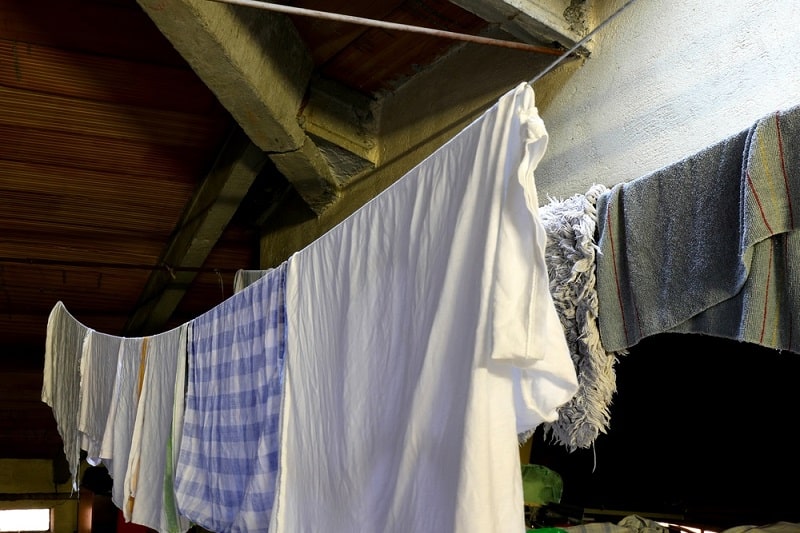
Another option for drying clothes inside that is very similar to a clothes airer is a retractable clothesline. These are perhaps more common outside but can also be used inside the home.
The idea of a retractable clothesline is that a nylon line is stored in a small box attached to the wall.
Whenever you need to hang up your washing, you simply pull out the line and attach it to the opposite wall using a hook. This creates an indoor washing line for you to hang your clothes.
One of the great things about retractable clotheslines is that they don’t take up any space in your home. The box on your wall that stores the line is very discreet, and the line itself can be hung high enough to not get in your way when it is in use.
Bear in mind, though, that these clotheslines still require proper ventilation, just like the clothes airers.
3. Heated Clothes Airer
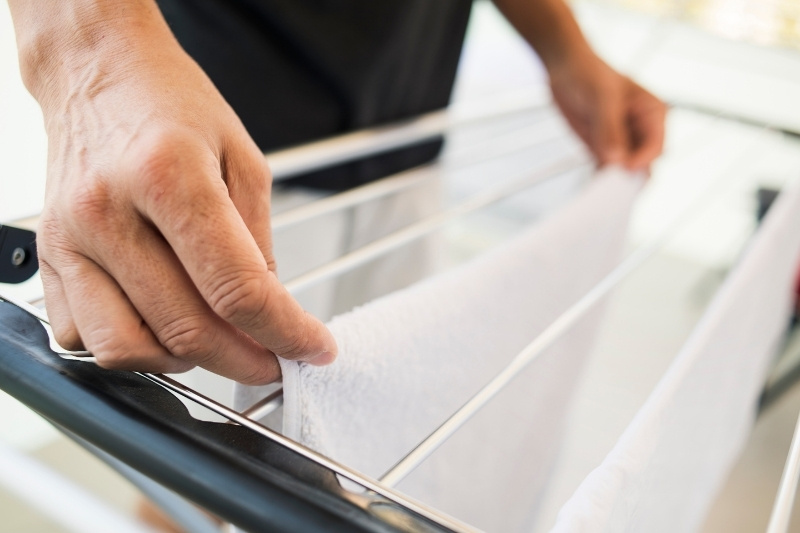
Next up, we have a heated clothes airer. As suggested by the name, this is the same thing as a regular clothes airer like that mentioned above, but it also has the ability to heat up.
Some heated airers also come with a pod that fits over your washing so that the heat is trapped in a smaller space.
Although these airers must be plugged in to benefit from the heating element, they use very little electricity.
This means they’re reasonably cheap to run, especially compared to running your tumble dryer multiple times per week.
They can also be folded away after use, meaning they take up little space in your home day-to-day.
The main problem with this drying option is, once again, the moisture issues. However, it is still possible to set up these airers in a well-ventilated room to eliminate this problem.
4. Dehumidifier

Perhaps one of the best tumble dryer alternatives on this list is the dehumidifier.
Although not originally created with drying washing in mind, these machines are designed to absorb moisture from the air and can do the same for your clothes too!
Dehumidifiers can take up to four hours to fully dry your clothes (much longer than a tumble dryer), but they are still much cheaper to run, even when taking this added time into account.
Because they suck the moisture out of the air, you don’t have to worry about keeping your laundry in a well-ventilated room when using a dehumidifier, either!
The main thing to note when using a dehumidifier to dry your clothes is that you will need something to hang your clothing on.
For small loads, you can use hangers, but in the majority of cases, you will also need to use a clothes airer.
5. Electric Fan
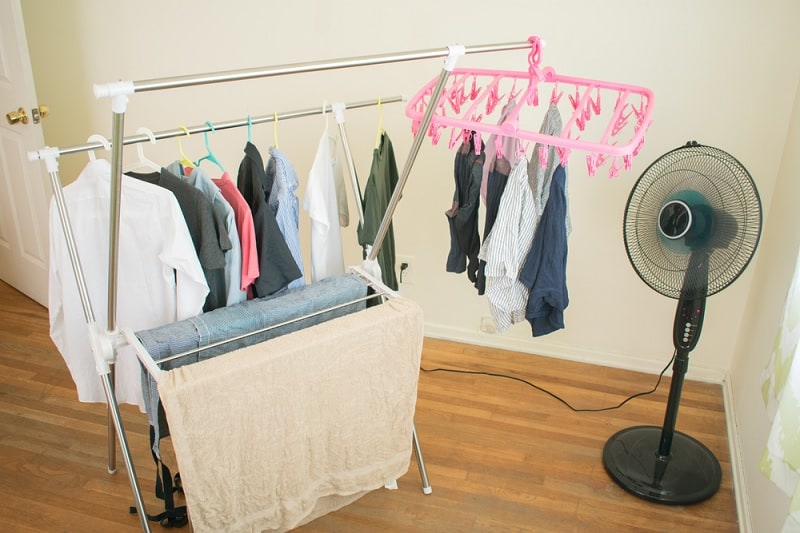
Along the same lines as a dehumidifier is an electric fan. Once again, this alternative will need to be used in combination with a clothes airer (or equivalent) for your clothes to dry properly.
An electric fan works by increasing the airflow around your clothes, therefore speeding up the drying process.
Unfortunately, a fan won’t help with the moisture issue, so you will still need to leave a window open while drying your clothes to prevent mould growth.
6. Radiator Rack
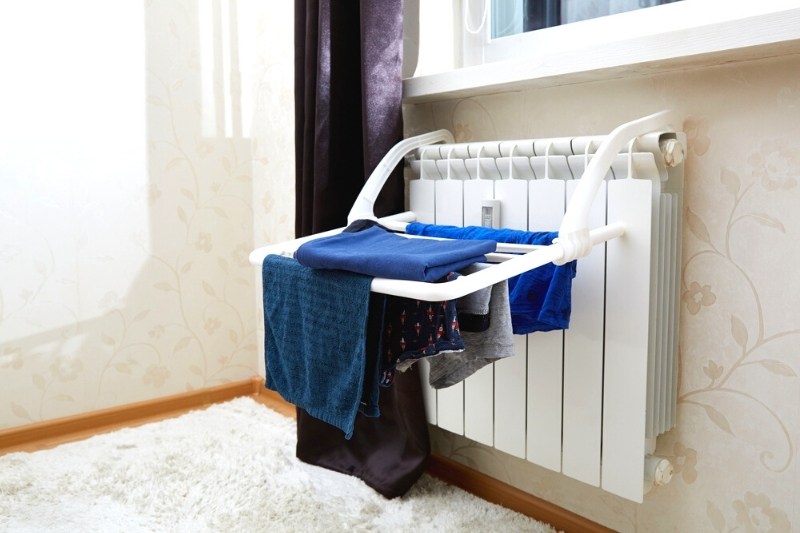
Our final tumble dryer alternative is a radiator rack. This is a small clothes airer that fits onto your radiator so that your laundry can be close to the radiator’s heat.
Each rack will only have a limited amount of space, but you can buy as many racks as you desire and have one on each of the radiators in your home if needed. If you are going to have racks in multiple rooms, remember to keep your whole house well-ventilated to avoid mould issues in the future.
Many people place their laundry directly on a radiator when trying to dry it. Although this works, we suggest you avoid drying your clothes this way.
Placing items directly onto a radiator presents a small fire risk and means your radiator has to work harder to reach your desired temperature, increasing your energy bill.
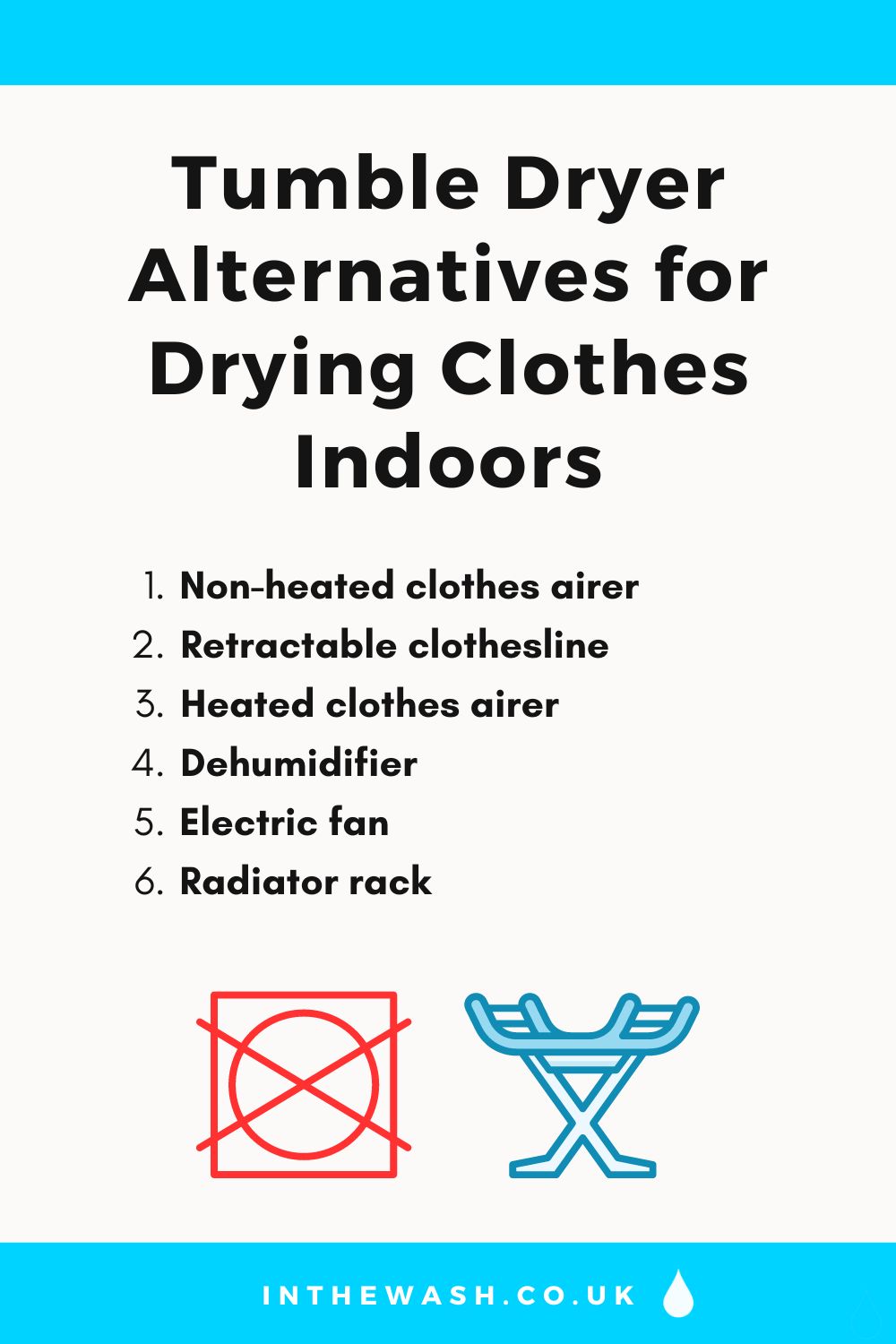
How Can I Dry My Clothes Faster Without a Tumble Dryer?
In most cases, one of the above alternatives for tumble drying will be your best option.
However, there are times when you need an item of clothing to dry as quickly as possible after being washed.
In this scenario, one of the below methods can be used to speed up the drying process:
Add an extra spin cycle
The easiest way to speed up your drying is to add an extra spin cycle to the end of your wash.
This will remove excess water from your clothes, speeding up the drying process. It can be used on a whole load of laundry, but this trick is most effective when drying thick items like towels and denim.
Iron dry the garment
To use this trick, you will need to wait until your item of clothing is damp rather than dripping wet.
Simply place your garment on an ironing board, cover it with a clean towel, and then iron it on a high heat. Never iron the damp clothing directly, as this could cause damage to the fabric.
Use a towel roll
This method is suitable when you need to dry single items of clothing or a few delicates. To make a towel roll, place the clothing onto a dry towel and wrap it up like a burrito.
You can then apply pressure to the towel using your knees to squeeze the water out of your garment. Once you unroll the towel, the clothing will be nearly dry.
Use a hairdryer
This is a speedy fix when drying a single item of clothing, but it can be costly, so we advise only using it sparingly.
Use the hairdryer on the highest heat possible, and always keep it moving over the fabric until the garment is dry.
Don’t hold the hairdryer too close or keep it in one area too long, as the intense heat could cause damage.
Oven dry the clothes
This may sound weird, but you can also quickly dry small items of clothing in your oven. You will need to preheat the oven to 100 degrees centigrade, turn the oven off, and then place the garment on a baking tray in the oven for 10-15 minutes.
Only use this technique for cotton, and make sure to wring out excess water first.

Hannah has a passion for cleaning. She worked her way around Australia by cleaning hostels in exchange for free accommodation and used her cleaning skills to bag a job as a chalet host for a luxury ski company in France.






